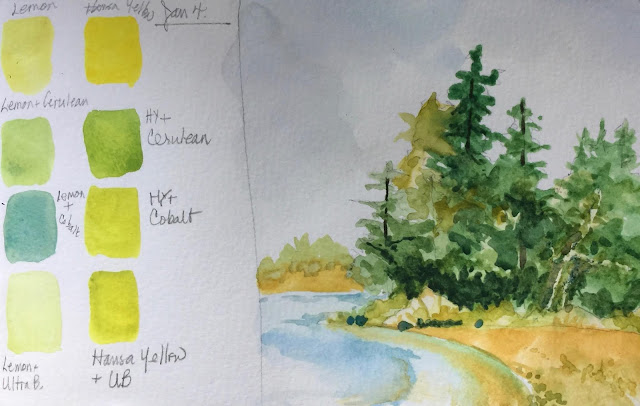 |
| Marks made with balsa wood tool |
I am not a calligrapher. I love to do hand lettering, which is drawing letters instead of writing them as calligraphers do. I practice to improve my letterforms, but I couldn't make a living as a calligrapher as some people do. That said, at the annual Trivial Pursuits put on by the Friends of Calligraphy last week, I tried my hand at using a folded or cola pen. Folded pens are a cheap alternative to a ruling pen, formerly used by graphic designers and drafters to rule straight lines. You can make your own cola pen by cutting out a half moon shape from a soft drink can, shape it over a narrow handle, and then attach it to the handle. I've tried folded pens before, but I haven't had much luck with them. I love the free-form look of the writing.
 |
| Ruling pen & folded or cola pen |
 |
| Alphabet made with a folded pen |
 |
| My attempt at a folded pen saying. The two phrases outside the square need to be stretched out. I will do this piece over again until I am satisfied with the results. |
What did I take away from the workshop? To remember to let go of my own expectations, to try something new and realize that practice is the key, and have fun doing all of that.
Calligraphers have found other ways to make marks on a page beside traditional pen and ink. For me, these tools provide more freedom and a step away from the meticulous calligraphic practice. Twigs, tooth cleaners, tongue depressors, car detailing brushes, bamboo and balsa wood can become instruments in the artist's hands. The marks made start out as letters, then become exaggerated or condensed, strung out or boxed in close.
 |
| Lots of options for making marks on the page |
Here are some examples of mark making with various tools. Each of them started with letters or words.
 |
| Letter G made with a folded pen, sumi ink and watercolor ink |
 |
| Made with stippling brush, paint brush, round piece of wood shaved to a point, sumi ink, walnut ink |
 |
| Made with an alder twig |
 |
| Various brushes & sumi ink |
http://www.rickpauluscalligraphy.com/the-white-house-1/
http://www.yukimiannand.com/yukimia/calligraphy.html



















